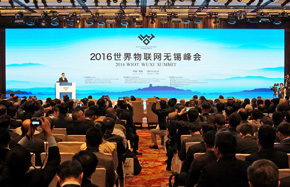Innovation zone stemming disease
China Stem Cell Group in Zhangjiang ready to save lives with groundbreaking treatment options
To promote scientific innovation and biomedicine technology, the Zhangjiang National Innovation Demonstration Zone in Shanghai aims to become a hot spot for the bioengineering and pharmaceutical industries, with research into stem cell technology forming a vital part of their operations.
China Stem Cell Group is one leader in China's stem cell industry.
Stem cell therapy refers to the usage of stem cells to treat or prevent a disease or condition.
Bone marrow transplant is today the most widely used form of stem cell therapy. Other types of stem cell therapy include those involving umbilical cord blood.
Research into the development of sources of stem cells and the application of stem cell treatments for neurodegenerative diseases and conditions such as diabetes, heart disease and other conditions are currently being conducted as well.
Established in 2004, the group has the largest repository of stem cell resources, as well as the highest number of transplantation cases in China.
It aims to provide safe and effective stem cell therapy to patients suffering from blood diseases with other illnesses.
The group has already performed more than 2,200 cases of clinical transplantation, more than any other institution in the country.
Wang Lei, general manger of the group, said that the group has thus far achieved a 100 percent match-rate among Chinese patients.
However, Wang said that China is still far from meeting the current demand for such treatments.
"China has about 5 million patients with various blood diseases and there are about 80,000 new cases each year.
"Unfortunately, only 3,000 to 4,000 of them are suitable to undergo transplantation treatment.
"There is still a large number of patients on the waiting list," said Wang.
"If more people are willing to store or donate their cord blood hematopoietic stem cells, more patients could be helped."
Over the years, the group has established partnerships with more than 100 hospitals across the country, mainly providing cord blood storage and clinical transplantation services.
It has also worked with the Shanghai Cord Blood Bank to establish an integrated medical platform covering regular storage, research and treatment.
During the early years following the group's establishment, the number of transplantation cases each year was very low.
But thanks to the rise of public awareness, the number increased to nearly 1,000 in 2016. The group has also been expanding its operations across the nation.
One such project is the stem cell hospital project in Hainan province, which will be the country's first and largest hospital of its kind.
It is expected to begin operations in 2017.
More than 1,000 transplants are expected to be performed at the facility annually.
The group is also planning to build the world's largest blood disease hospital in Jiading district, which is expected to provide more than 1,000 transplant surgeries annually. The project has been listed into the district's development plan during the 13th Five-Year Plan (2016-20) period.
Due to a shortage of related medical facilities, 95 percent of patients lack access to effective stem cell treatment.
Wang said a number of leading hospitals and blood disease institutes have signed agreements to provide technological support for the new hospital in Jiading.
Industry researchers said that by 2020, the industry scale of global stem cell industry will exceed $400 billion.
In China, a complete industrial chain, from storage to clinical use, has already formed.
Over the next five years, the value of stem cell industry in China is expected to grow from its current 2 billion yuan ($289 million) to 30 billion yuan annually.
Throughout the rapid development of stem cell and translational medicines, regulations are also needed to better guide the industry's healthy development, Wang said.
"These guidances will not only serve to regulate the industry' development and promote its technology, but also allow more people to benefit, shortening the gap between China and developed countries," Wang said.






















